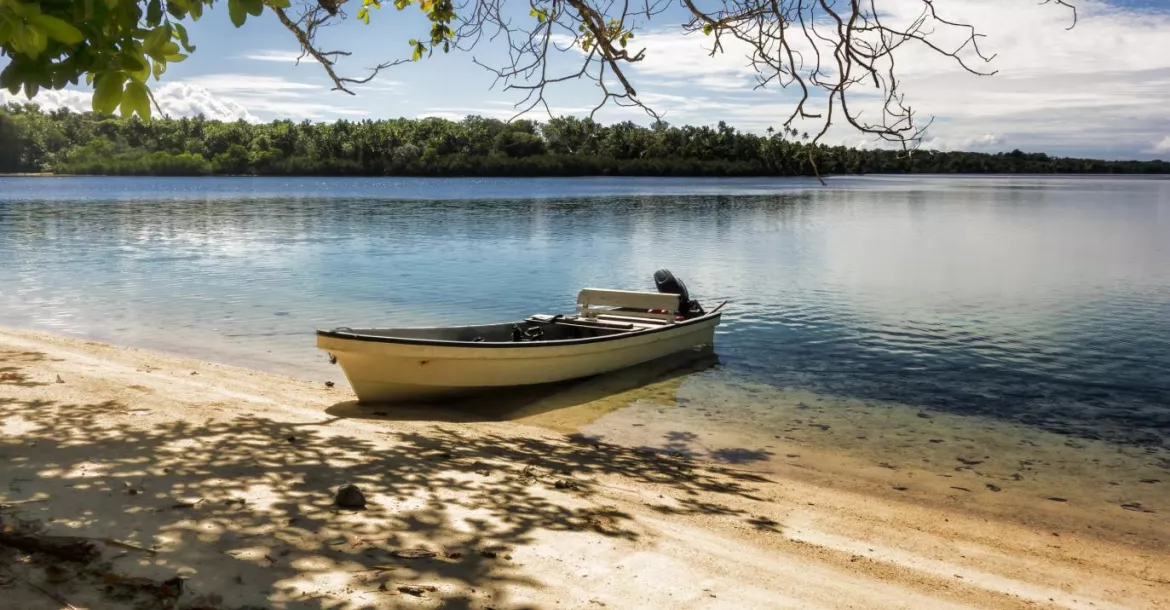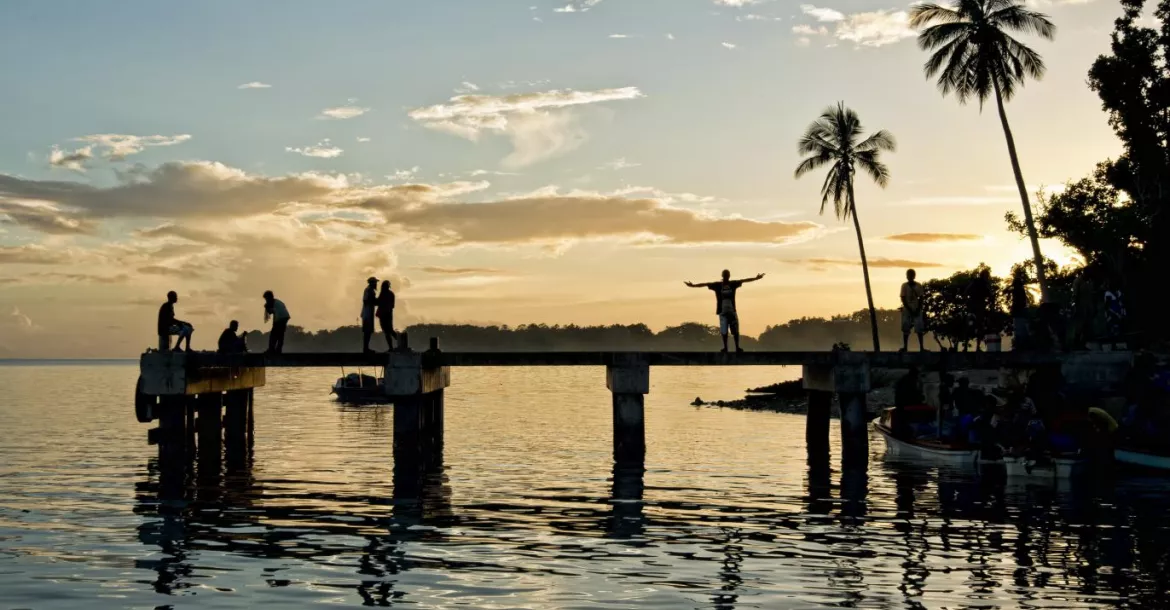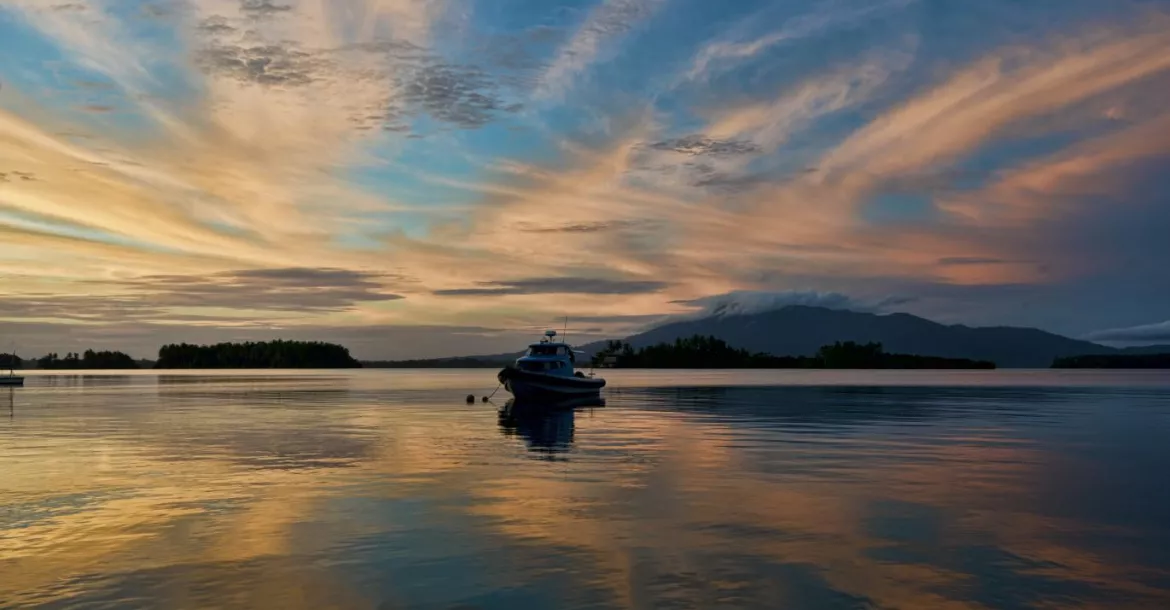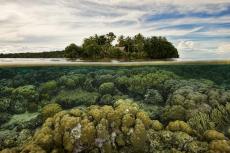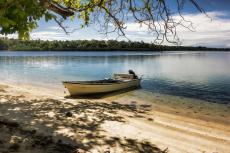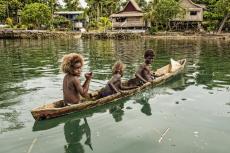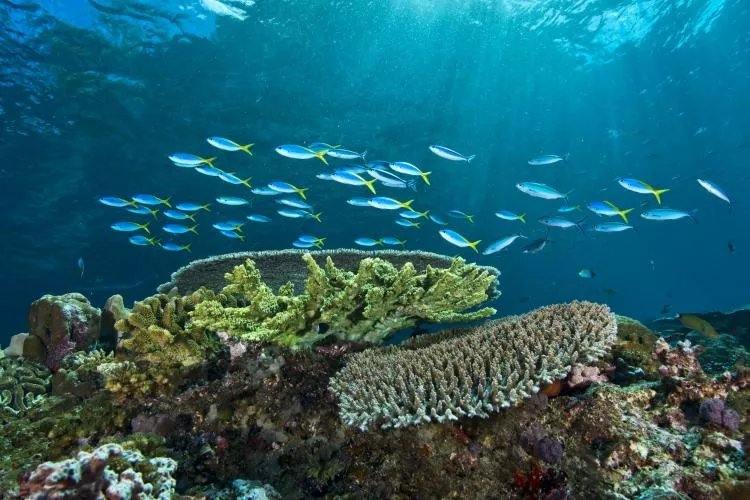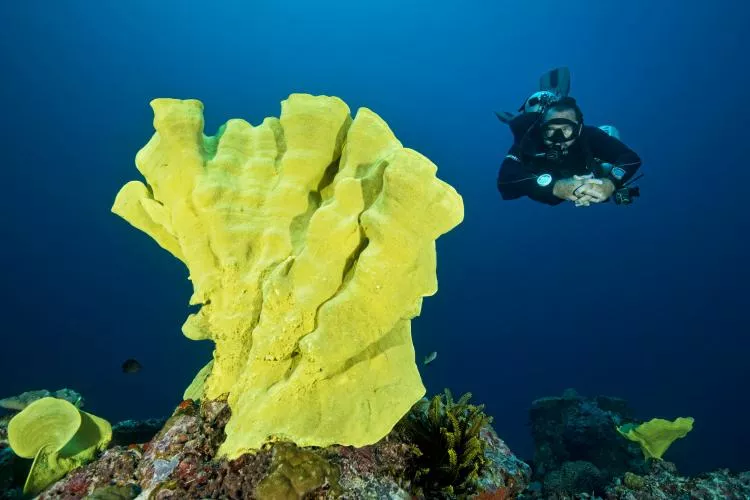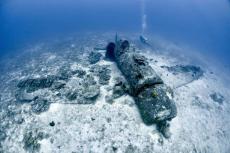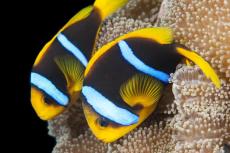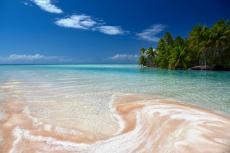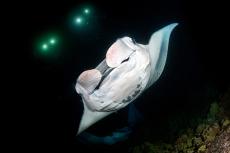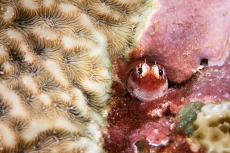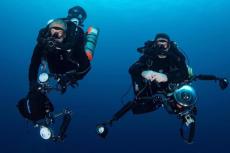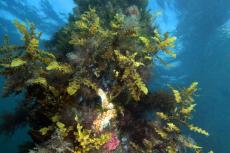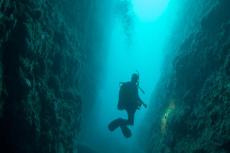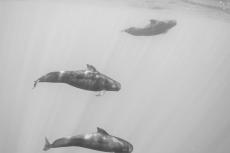Like a series of random punctuation marks, the many islands of the Solomons archipelago lay along the southern section of the Pacific Ring of Fire, in between the countries of Papua New Guinea to the north, and Vanuatu to the south. An independent country since 1976, the Solomon Islands are a quite special blend of Pacific Island Melanesian culture and phenomenal tectonic forces, which have created a chain of mountainous islands that are rich in native rainforest, spectacular volcanoes and incredible lagoons.
Contributed by
Underwater, there are rich reef systems and an amazing variety of marine life together with one of the highest concentrations of WWII wrecks in the Pacific.
Somewhat off the beaten track and to a degree tainted by the civil disorder that convulsed the country from 1998 to 2004, the Solomon Islands have long since stabilized and are open for business again, offering a most rewarding destination for divers.
Selectivity… New Georgia
At the beginning of this year, having heard and read much about the country, I decided that it really was time I explored the Solomon Islands first-hand.
My first port of call when visiting a new location is always Google Earth, because it really does put everything into perspective, and with the Solomon Islands, I soon realized that I needed to be selective.
The country consists of a total of almost 1,000 islands organized into nine provinces, plus the capital territory of Honiara on the northwest coast of the island of Guadalcanal. All of which means there are a lot of places to dive, and deciding where to go is a bit like the kid in the candy store—where to start?
Working the Internet hard narrowed down the first choice—land-based resort or liveaboard?
Honiara is the base for the respected liveaboard company, Bilikiki Cruises, who operate two boats in the Solomons. While logistically this offered the easiest place to begin as you fly in and go straight onto the boat, I opted for land-based diving so that I could get a deeper sense of the local cultures.
I eventually settled on two locations in the New Georgia area of the large Western Province of the Solomon Islands: Uepi Island Resort, in the huge Marovo Lagoon at the eastern end of the province, and Munda, in the not quite so large Roviana Lagoon on the southern coast.
Both these locations have excellent reputations, and logistically, they are pretty easy to get to, as Solomon Airlines operates regular domestic flights from Honiara to New Georgia with stops at both Seghe, which is the closest airstrip for Uepi Island, and Munda.
There were another couple of places in New Georgia I would have loved to include: the spectacular Gatokae Island on the southern edge of the Marovo Lagoon and the wrecks of Gizo on the western tip of New Georgia. But my time for travel was limited, so I eventually decided that they would have to wait for next time.
A bad rap?
If certain sections of the Australian media are to be believed, the Solomon Islands is the Afghanistan of the Pacific, and only the intervention under the Regional Assistance Mission to the Solomon Islands (RAMSI) stopped it from actually becoming a failed state.
RAMSI was launched in July 2003 at the request of the Solomon Islands government, after the civil disorder had reached a crisis point. It was basically a plea for help to its Pacific Ocean neighbors. Led by Australia, RAMSI consisted of military, police and civilians from a coalition of regional countries that stepped in and quickly stabilized the situation, restoring law and order, and over time, establishing the foundations for the Solomon Islands to grow again.
But perceptions linger, and I had lots of raised eyebrows in Australia when I told friends and colleagues that I was off to the Solomon Islands for three weeks. My personal acid test for such situations is to take off my watch, leave it and anything else of value in my room, pick up my cheap shirt-pocket camera and go for a walk to see what happens.
I always ask around if is it safe to go walkabout. From the taxi driver who brought me from Honiara Airport to the hotel concierge, I got a general “no worries”. Sure enough there were no worries, and I walked for many miles around Honiara without a single problem, meeting lots of nice people on the way.
Uepi Island
Having “survived” Honiara, the next part of my journey was the flight to Seghe, which is the main airstrip for the Marovo Lagoon and the stopping off point for Uepi (rather amusingly pronounced you-pee) Island.
The flight heads northwest from Honiara towards New Georgia, passing over the scenic Russell Islands group on the way. The journey provides the first real indication of the incredible beauty of this country, as you fly over one rainforest covered island after another—all surrounded by the clear blue waters of the Solomon Sea. Then, as the plane descends over the Marovo Lagoon towards Seghe, you can see how the outer barrier islands form what is in fact the largest saltwater lagoon in the world, and an appreciation forms for its sheer magnitude!
There really is something uniquely exciting about getting off a small plane on a grass airstrip on a remote island and watching your dive gear being extracting from the cargo bay. Feeling a little bit like a cross between Indiana Jones and Jacques Cousteau, I walked over to the arrivals area—which is also the departure area, shop and waiting area, all consolidated into a single small wooden building—and was met by my “driver” from Uepi.
Five minutes later, we were skimming across the lagoon on the 25-minute journey to Uepi where the indomitable Jill Kelly was waiting to greet me on the main jetty.
Jill, and her husband Grant, are partners in the small consortium that operates Uepi Island Resort where they are also the resident managers. But most importantly, the island is their home, and they are fiercely proud of it.
They discovered Uepi by a series of quite special coincidences in the early 1980s and took over the operation of the small resort on the island in 1987, running it remotely from Australia through resident expatriate managers, while they raised their two children. In 2000, they moved to the island to take over direct control and have been there ever since, developing the operation into an integral part of the lagoon’s cultural fabric.
The complete staff of Uepi is drawn from the villages of the lagoon, and the Kelly’s have personally developed all of them—from the cooks in the kitchen to the dive staff. Managing a successful tourism-based business in a remote location is inevitably a balancing act between the inescapable perception of wealth being taken from the common property, that is the Marovo Lagoon, and the “Wantok” system that predominates in the Solomon Islands.
Wantoks are basically those who speak the same language or dialect, and in the Solomons where there are about 220 different languages, it can be thought of as a kind of tribal system whereby you look out for and share what you have with your Wantoks. In many ways, it is the glue that holds things together and evolved as a part of the traditional culture for very good reasons, but it is also a major impediment to progress, as it effectively penalizes those who do well by requiring them to provide for those who have not prospered so well.
A successful business like Uepi can end up in a situation where excessive demands are made, and failure to comply can generate significant resentment.
The Kelly’s have tackled this issue both positively and proactively by starting their own not-for-profit organization, Solutions pa Morovo, and supporting the admirable work of the Marovo Medical Foundation.
Solutions pa Morovo is focused on improving the quality of life of the people of the Marovo Lagoon and has a specific focus on educational scholarships, while the Marovo Medical Foundation has worked absolute wonders at Seghe’s local hospital—including (believe it or not) building and equipping a complete new operating theatre.
Diving the Marovo Lagoon
The majority of the dive sites accessible from Uepi Island are on the New Georgia Sound side of it and the other barrier islands that form the northern rim of the Marovo Lagoon. The Sound is the large body of water that runs through the middle of the Solomons, separating the two main island chains that make up the country, which was nicknamed “the Slot” by the Allied forces during WWII.
The Slot was the route chosen by the Japanese for what became known as the “Tokyo Express”—blacked-out destroyers travelling at high speed through the night to try and avoid Allied attack, while they resupplied their base on the island of Guadalcanal.
In fact, the Slot is actually a series of deep-water basins that are surrounded by the islands of the Solomons, which in turn are bounded on all sides by the incredibly deep trenches and troughs of the region—all of which produce a strong flow of nutrients and bountiful marine life, including a very healthy shark population. Sharks are so common that after a few dives you start to ignore them.
Diving the sites on the Slot side of the Marovo Lagoon are heady experiences—think sloping walls dropping into the depths of the abyss with clear blue water and every chance of seeing large passing pelagics.
Then there are the “points” where the geological fault lines have thrown up the islands and left the passages into the lagoon. Here, there are ridges where rich coral gardens have developed along with their ecosystems, all nourished by the mixed nutrients from the depths of the Slot and those that come out of the lagoon.
At the points, such as Uepi Point on the tip of the island and the main channel into the lagoon, you will see the underwater world as Mother Nature intended it to be—lush soft corals, superb fans filtering the nutrients and the full food chain of creatures all the way up to the cruising grey reef sharks—or Her alter-ego at Charapoanna Point on the other side of the channel where the same intensity is concentrated onto the ridge, as the currents sweep round the corner.
Uepi Welcome Jetty
No visit to Uepi would be complete without experiencing the resident school of Marovo Lagoon grey reef sharks at the Welcome Jetty. Located on the edge of the deep-water passage between the island and its neighbour Charapoana, the jetty and its guardians are literally world-famous and are truly a “must-do” experience. Best dived on an incoming tide, the trick is to position yourself in front of the jetty at about 5m and wait, as the sharks are used to divers and quite curious. So, if you are patient, they will come in and check you out.
Jill and Grant Kelly have been diving and snorkelling with the sharks of the Marovo for nearly 30 years and say they have never felt threatened by them. In fact, the way Jill described it, the sharks are comfortable and curious around divers because they have never been threatened by them. Is that not how it should be?
Munda and Roviana Lagoon
The next step on my journey of exploration in New Georgia was the short flight from Seghe to Munda and the incredibly scenic Roviana Lagoon on the southwest coast of the island. While not as big as the Marovo Lagoon, the Roviana is still a significant body of water that extends for over 50km eastwards from Munda and is bounded by a chain of barrier reefs and islands lying 2-4km offshore.
Within the lagoon, the tectonic gods have created a series of relatively shallow but sheltered environments that are interspersed between deep channels, which provide unobstructed passage for the waters of the Solomon Sea to enter. Rich with nutrients from deep trenches and basins to the south, these waters produce the perfect conditions for fish to aggregate and then spawn, which means the Roviana Lagoon can be considered as a gigantic nursery and larval trap for the area.
Munda is both the epicenter of the lagoon and the largest town on the island of New Georgia. It consists of a number of small villages that grew around a colonial era coconut plantation at Munda Point.
During WWII, the Japanese built an airstrip at Munda, which they managed to conceal for some time from the Allied forces by suspending coconut palms on cables across the runway so that it was not visible from the air. The subsequent discovery led to a lot of bombing runs on the area, resulting in temporary closures of the airstrip while the Japanese made repairs to get it back in operation. It also meant that there is still a lot of unexploded ordinance in the rainforest that surrounds the Munda.
The original airstrip is the site of the current runway, which while I was there was approaching the end of a significant upgrade to allow jets to land. A major part of the project had involved the safe disposal of all those unexploded bombs.
The construction work had created a bit of a bubble in Munda, the downside of which was that the flow of money into the town had produced a lot of young drunks eager to spend their new found riches on Solbrew (the local beer) rather than to disperse it amongst their less fortunate Wantoks.
Fridays in Munda are the highlight of the week, and I have to say that they are worth giving up an afternoon’s diving, as the locals come in from all directions across the lagoon to sell their produce at the local market in Lambete, the main village and the location of the very quaint Agnes Lodge—the only hotel in town. The Solbrew starts to flow from mid-afternoon, and a distinct party atmosphere develops by sundown when the action moves to the Kava Bar—think Bob Marley meets Somerset Maughan and happy drunks all around!
Dive Munda
One of the great things about traveling to remote locations is that you meet some really interesting people. If Jill and Grant Kelly at Uepi personify Aussies in the South Seas, then Graeme Sanson and Jen Will are the U.K. versions. In their sixth year as residents of the Roviana Lagoon, their British bulldog determination to overcome the odds whilst still enjoying themselves and doing what they do best, was positively uplifting and at times very amusing. Both keen technical divers and instructors, they have managed to assemble all the “stuff” associated with doing this safely in a remote location in their small dive shop at the side of the Agnes Lodge.
Being a humble air diver, I had to listen stoically to their many stories about deep cleaning stations at 55m where oceanic silvertip sharks come in for a touch-up and polish, or the limestone formations and cave systems of the lagoon, together with the numerous WWII ship and plane wrecks of the area that are still to be located; but all that is for another story, and as they say—watch this space.
Diving the Roviana Lagoon
There are many sites to dive in the Roviana Lagoon, both inside the barrier islands and on the outside. The best, and certainly the most adventurous diving, are to be had on the outer sides of the barrier islands where you will find walls and slopes washed by the oceanic currents of the Solomon Sea and the biodiversity associated with those current flows—more hard corals than the softer variety, but very rich none the less, and all bathed in the deep clear blue waters that create stunning photogenic backdrops to the pelagics that patrol in them.
Probably the most iconic dive inside the lagoon is the Cave of the Kastom Shark, which is about one hour’s boat ride from Munda and located in the mangroves of one of the many islands. Entrance to the cave requires a short walk through the mangroves and then dropping into the small freshwater pool that is the start of a vertical shaft that leads into two large connected chambers.
A guideline has been laid all the way through and, although you reach a depth of 35m at one point, the whole experience is pretty laid back and non-threatening to my untrained cave diver perspective. The exit from the cave takes about ten minutes to reach from the entrance in the mangroves and leads you out onto a steep wall where pelagics prowl on a regular basis.
Similarly, no trip to the Roviana Lagoon can be concluded without a pilgrimage to the wreck of the Bell P39 Aeracobra wreck. I think every diver would like to discover their own wreck, but Graeme and Jen have actually done it when they located the WWII fighter sitting serenely upright on the sand in 36m of water inside the lagoon. The wreck is reasonably intact and comes complete with its own school of sweetlips, which appear to have no fear of humans whatsoever. It is also a “must-do” dive.
Graeme Sanson has not been able to identify the plane or its history since he discovered it in April 2011 but believes it was shot down on a combat mission, as the ammunition trays have rounds in them but are not full.
Altogether, I spent 12 days in Munda and had many amazing dives. But if I had to pick a favorite, it would be Nusa Roviana Wall, which we first dived almost as an afterthought one afternoon. Down at 35m was the most amazing deep water reef, flush with both hard and soft corals, black coral trees and teeming with fish, while in the blue, large schools of jacks and barracuda patrolled looking for their next meal.
As we watched a squadron of eagle rays pass overhead and as I pondered whether it could ever be any better, the frantic signaling of Graeme Sanson drew my attention to the great hammerhead that was cruising up the channel just two meters to my right. If only I had taken the wide-angle camera!
Afterthoughts
Like a fine wine, the Solomon Islands stimulates your taste buds and then draws you in, wanting more. I would have loved to stay longer and explore the things and places I learned about. This fine wine, once opened, has to be finished, and I will go back to the Solomons to finish my journey of exploration. It’s just a matter of time. ■
Don Silcock is a Bali based underwater photographer and writer whose principal focus is the diving and cultures of the Indo-Pacific region. His images, articles and extensive location guides can be found online on his website: Indopacificimages.com
Published in
- Log in to post comments




